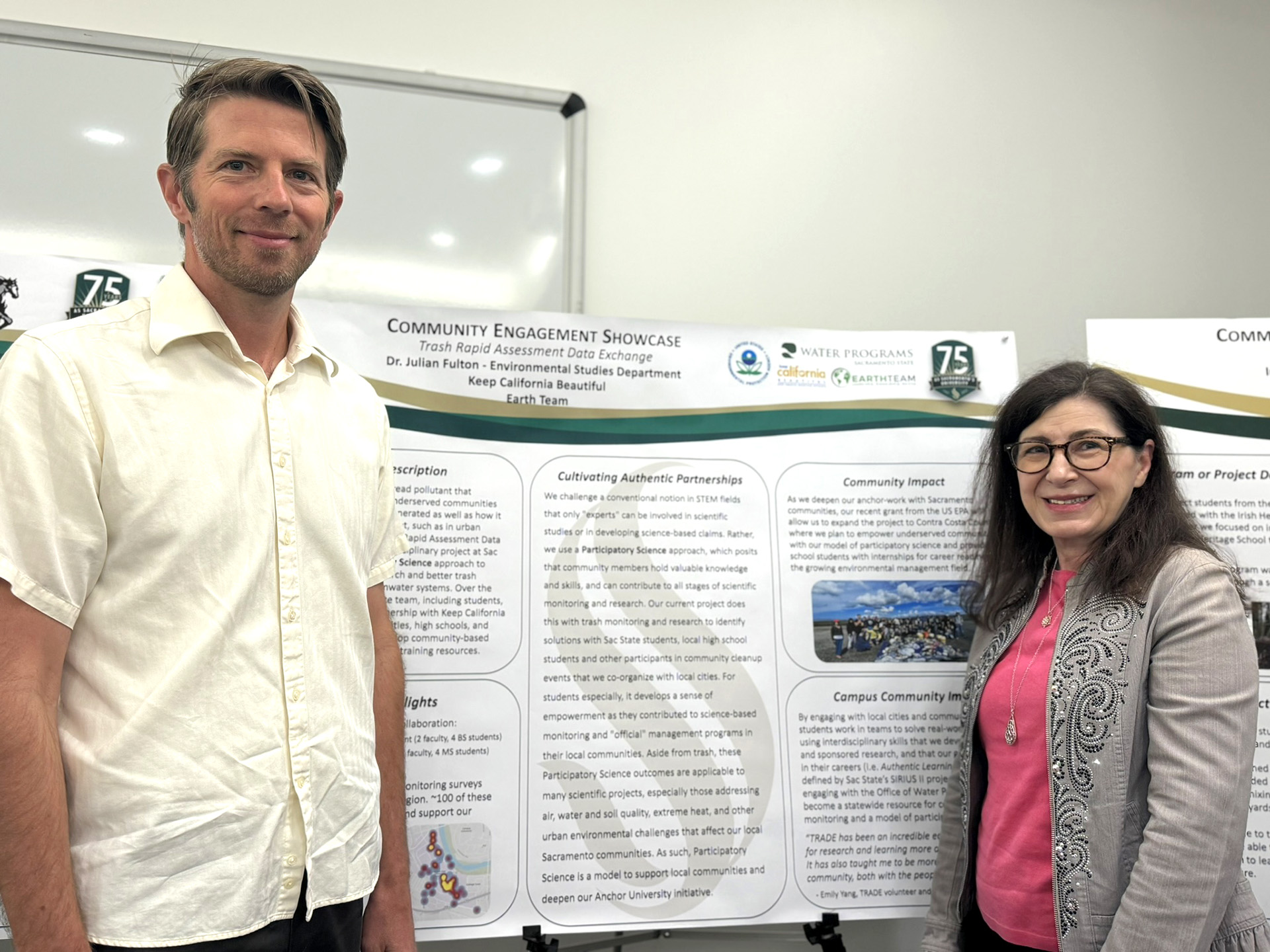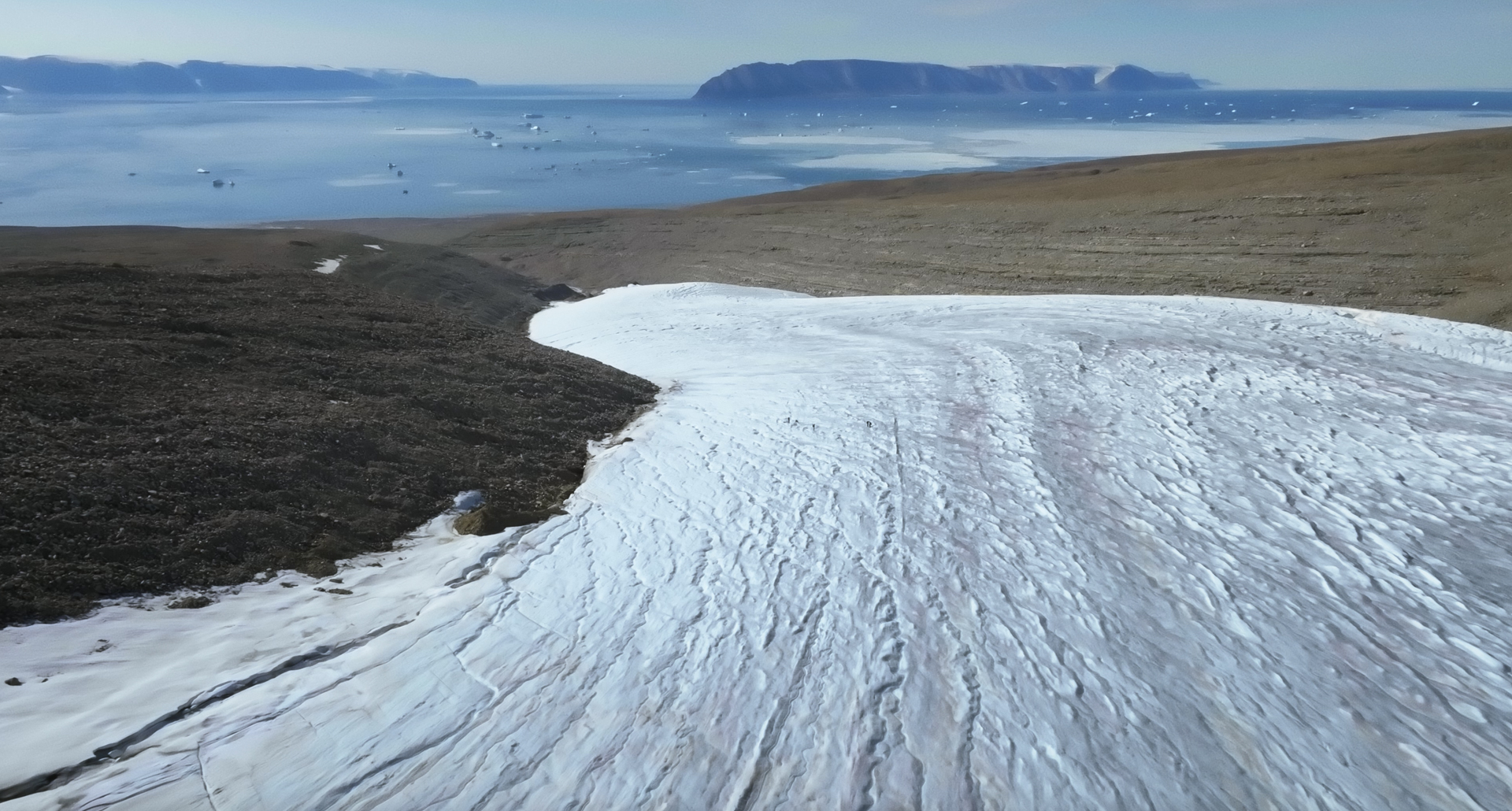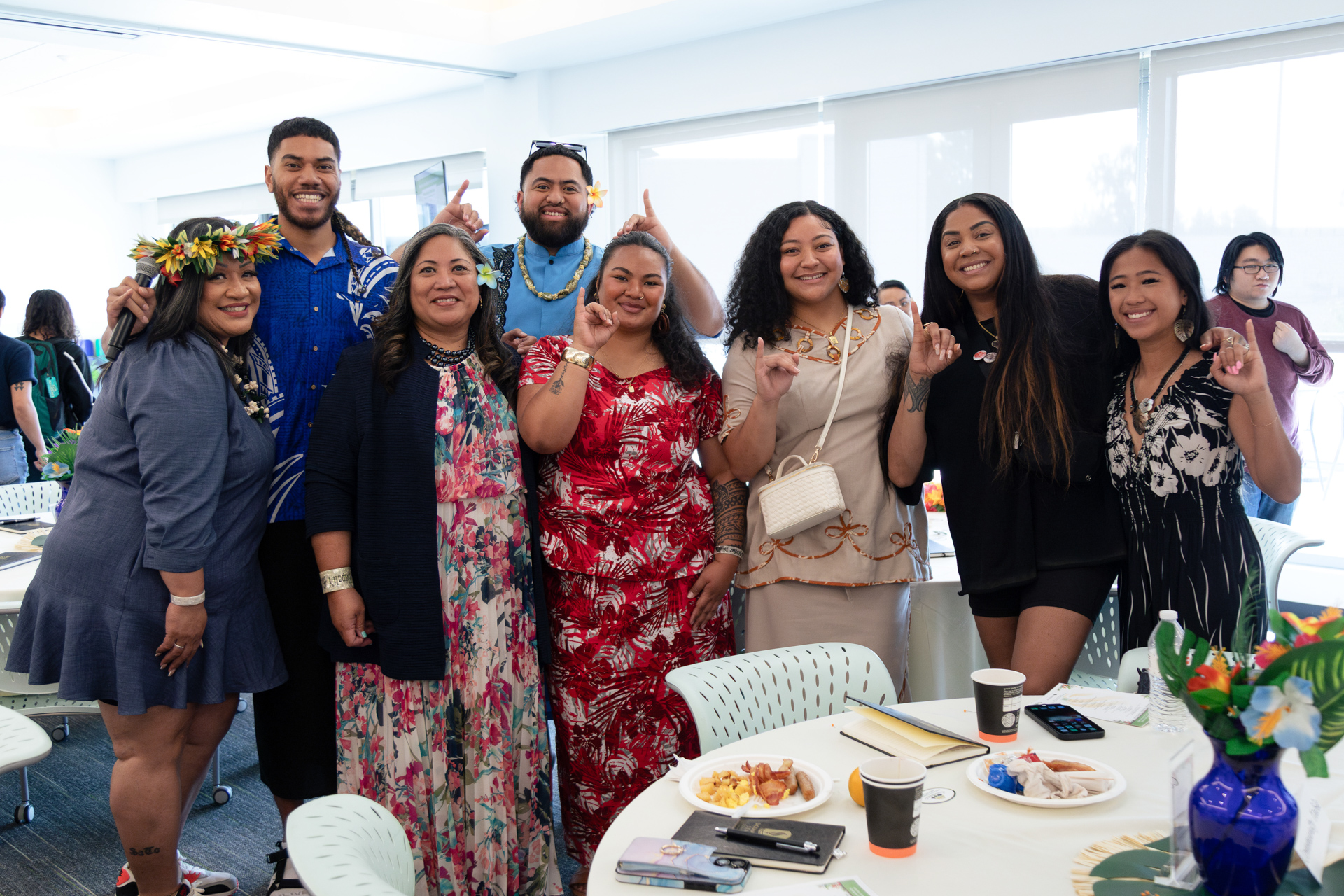Story Content
Sac State professor turns California’s waterways – and the campus – into a living lab for environmental innovation
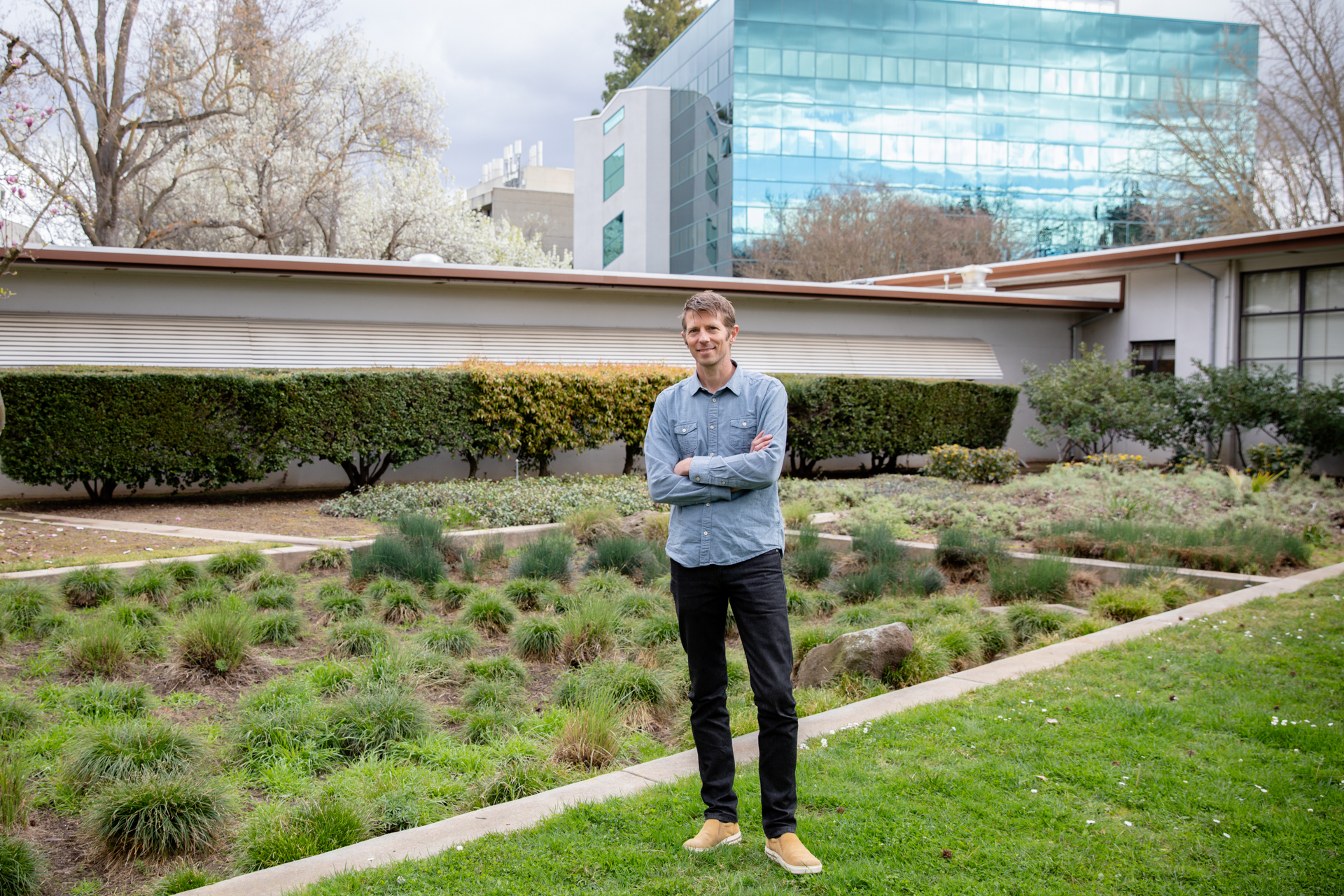
June 20, 2025
Julian Fulton followed his curiosity about water to California’s rivers and oceans, eventually flowing to Sacramento State.
In the decade since he began teaching Environmental Studies at the riverside campus, Fulton has integrated science and technology with broader questions of sustainability and how humans can coexist with nature.
“Studying water as an organizing principle takes you in all kinds of different directions,” he said. “Water has led me in new directions, too.”
His research looks at how to protect California waterways, and he often collaborates with faculty from other departments. He also engages students in his work, including on grant-funded projects like cleaning up San Francisco Bay or studying green stormwater systems designed to filter toxins out of water flowing from campus into the American River.
“We’re using it as a learning lab,” he said. “It helps students to understand all these different environmental challenges we have, and to notice sustainability features in the landscape and how they fit into their daily lives.”
Growing up in Berkeley, Fulton lived in a city surrounded by natural open space and saw the conflicts between urbanization and environmental impacts.
“The Delta is held together by levees, and the drinking water for more than half the state’s population comes from the Delta. That kind of got me focused on California and water issues.” -- Julian Fulton
As an undergrad at UC Berkeley, he studied International Development and researched how different countries grow. After graduation, he worked in construction before returning to his alma mater for a master’s degree in Civil and Environmental Engineering.
“It was 2005, and Hurricane Katrina hit New Orleans the first day of the semester, and I just remember my Soils Engineering professor, who had worked on the levees, laid it all out for us,” Fulton said. “He’d predicted what was going to happen.
“It made me understand the connection between the built environment and the forces of nature.”
As Fulton learned how the California Delta is vulnerable to the same problems that plagued New Orleans, he shifted his research focus to saving our state’s waterways.
“The Delta is held together by levees, and the drinking water for more than half the state’s population comes from the Delta,” Fulton said. “That kind of got me focused on California and water issues.”
He returned to Cal for an Energy and Resources Group doctorate, merging multiple disciplines in his desire to save the planet.
In 2016, he joined Sac State’s Environmental Studies department. With the American River in the campus’s backyard, it soon became his mission to clean up California’s waterways.
Fulton worked with Environmental Studies Lecturer Christine Flowers and the nonprofit Keep California Beautiful for three years to develop the Trash Rapid Assessment Data Exchange (TRADE), a community-based system that monitors refuse in local rivers and streams that ultimately flows to the Pacific Ocean.
Volunteers input information about the trash they see into a mobile app built by Sac State Computer Science Professor Ying Jin and her students.
“In the past, people used pen and pencil to record the type of trash they found, then inputted the information into Excel files,” Jin said. “TRADE is a cell phone app, which makes it easier to collect information.”
People can also see the results of their work.
“We want more people to see what’s happening regarding trash in California over time and from particular cities,” she said.
“Everyone should be aware that we need to protect our planet for our future generations. We have the same goal, and we collaborated very well.”
Last year, Fulton won a $742,240 U.S. Environmental Protection Agency grant to expand TRADE from the Sacramento area to Contra Costa County to help clean up the San Francisco Bay.
Fulton is also part of the Sustainable Interdisciplinary Research to Inspire Undergraduate Success (SIRIUS) Project put on by the College of Natural Sciences & Mathematics and supported in part by the National Science Foundation and W.M. Keck Foundation. Some 67 courses at five Sacramento area-colleges and universities, including Sac State, were redesigned to give students authentic learning experiences through research.
The common theme was the human impacts of the American River ecosystem. And Sac State students play an important role in the work.
Since 2015, Fulton’s upper division Environmental Studies students have been studying the system of Low Impact Development (LID) sites built by the Sac State Office of Water Programs through a California Department of Water Resources grant.
These dozen or so LIDs snake through campus hiding in plain sight as pockets of green space. But beneath the flora and fauna, LIDs collect stormwater from streets and parking lots, filtering it back into the ground using plants and soil that also clean out toxins like motor oil and heavy metals before the water goes back into the American River.
“Ten years on, we have an opportunity to study how well they’re doing,” Fulton said.
Students in Fulton’s class are divided into groups, each studying different aspects of the LIDs including water quality, hydrology, ecology, and even how the campus community accepts and is willing to use these spaces.
Last spring, the water quality group constantly checked weather news waiting for the first rain. Their interest was primarily looking for an emerging pollutant called 6-PPD, an antioxidant used by tire companies to keep rubber from cracking.
Rain storms wash the rubber particles left on roadways as tires wear out into local streams and rivers, killing populations of coho salmon.
“It was me and five other students messaging each other on Discord or text to see who could be there,” Environmental Studies major Evan Lowe said. “We were sitting there waiting, because even if there’s rain, it doesn’t mean it’s enough to get a flow.”
Students eventually took samples from two parking lots, which later showed high levels of 6-PPD.
Despite leaving with runoff-soaked shoes, Lowe enjoyed the hands-on experience.
“It’s exciting for me because this is real field work,” he said. “It doesn’t mean you always get results, but it gives you perspective. Yeah, it sucked being cold and wet, but I know this is part of the work, and it’s rewarding.
“I think everyone can benefit from this kind of experience because it gives you hands-on, real-world application.”
Teaching future generations of leaders is equally important as the research.
“Science lends itself to dividing things up so you can study and understand them,” Fulton said. “But then you need to put them back together in order to solve problems.
“Environmental Science needs to be interdisciplinary to address environmental challenges, which are never as straightforward as they may seem. The next generation of professionals, from government leaders to people in the private sector, need to use that way of thinking, and we need to prepare our students to enter the workforce with that mindset.”
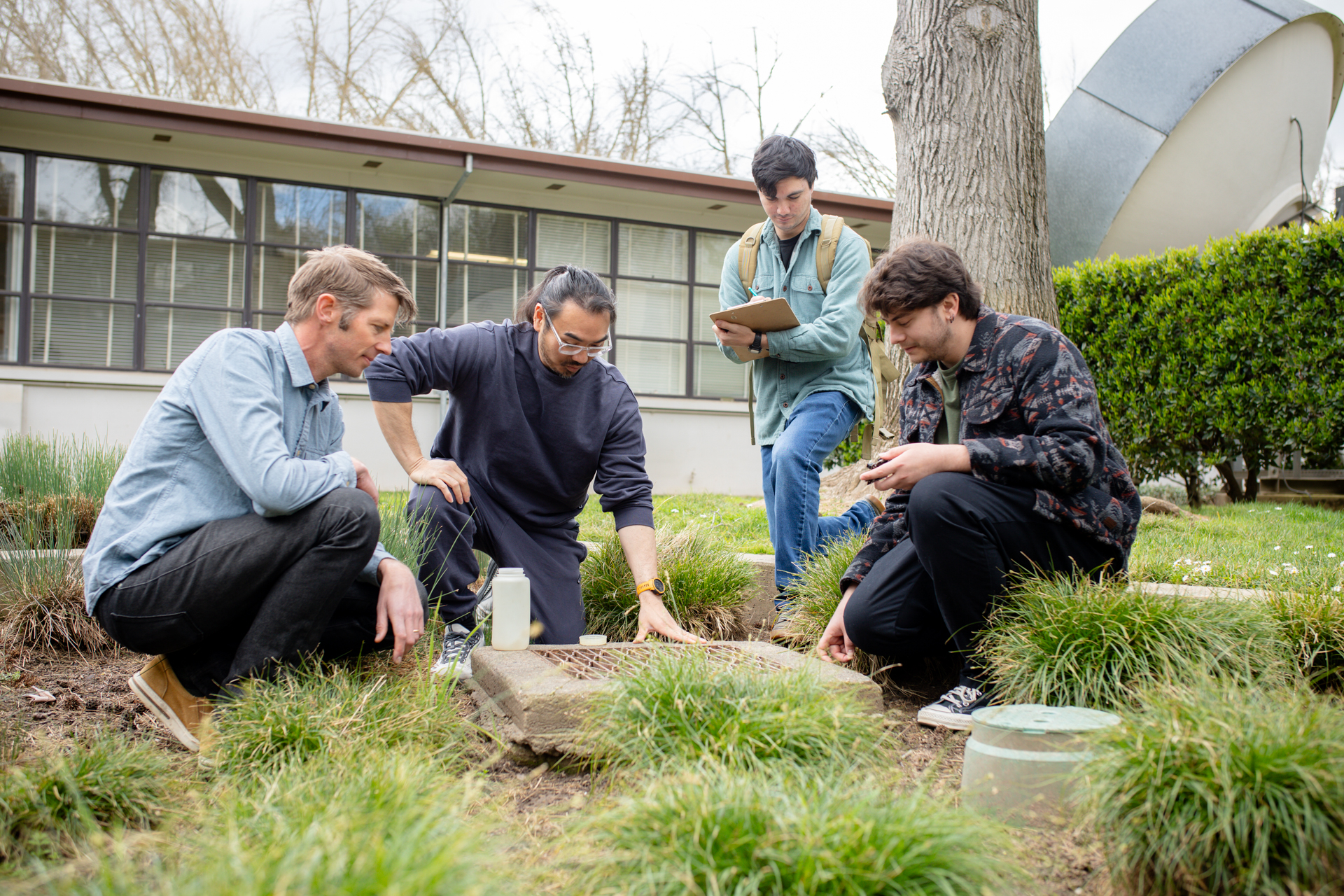
Editor's Pick
Media Resources
Faculty/Staff Resources
Looking for a Faculty Expert?
Contact University Communications
(916) 217-8366
communications@csus.edu
